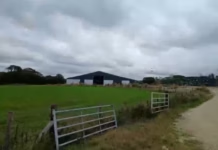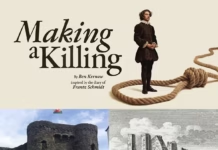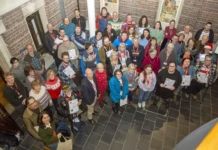We’ve had an interesting response to our first Family Ties article from Debbie Hillard Williams regarding her own family’s history!
Debbie contacted us after reading Family Ties and wondered whether we could give her any advice on tracing the family of her Great grandmother.
The only facts that Debbie knows about her Great grandmother’s early years are that she was born sometime in the 1890’s and that she was abandoned as a baby outside a workhouse in Lancashire, wrapped up and left in a wooden box with no letter or anything to provide a clue to her real identity.
Debbie’s great grandmother was given the name Martha by the staff at the workhouse and she thinks that they must also have given her a surname. Unfortunately Debbie doesn’t know what it was.
Martha’s story
After being abandoned at the workhouse, she lived there until the age of 14. She then left and went into service at a large house.
At the age of 19, she married Robert Entwistle who was Debbie’s great grandfather. Due to a lack of work opportunities, the couple decided to walk to Wales where they’d heard that there was plenty of work available in the coalmines.
According to Debbie’s grandmother, who was Martha and Robert’s firstborn child, Eira, the couple walked to Wales carrying a small tent, using this to sleep in fields during their long journey.
Robert found work as a miner and the couple settled in a rented cottage in the Pontyberem area of Llanelli. They went on to have three more children, all boys.
Sadness and deep loss
Debbie remembers her own mother, Martha’s granddaughter saying that Martha often felt sad at not knowing her roots and that she felt a feeling of deep loss throughout her life.
Debbie mentioned that there is a history of non-identical twins in her family. Her mother, Martha’s granddaughter, was a twin; Debbie herself had non-identical twins and Debbie’s daughter has twin girls!
It is known that non-identical twins can run in families.
The family have speculated as to whether Martha herself could have been one of twins. This could explain the feeling of deep loss she felt, a common feeling expressed by people who are twins and separated from their sibling.
Why abandoned?
In those days there would have been no pre-natal scans to pick up on the fact that the mother was carrying more than one baby. So, when the babies were born the parents were presented with not one extra mouth to feed, but two!
If times were hard, and they were for most ordinary people in late Victorian England, the desperate parents may have been faced with the unenviable task of choosing between being able to feed two extra mouths.
The only option? Give one child away and only have one extra mouth to feed.
If this was the scenario faced by Martha’s parents, they may have chosen to keep her sibling for a variety of reasons e.g.
- Martha may have been the youngest of the twins,
- the frailest twin, or even,
- just because she was a girl and perhaps her twin was a male child.
Of course, this is pure speculation but it might go somewhere to explain why Martha was abandoned at the workhouse!
Another possibility to consider is that Martha’s mother may have died during or soon after childbirth. This was a reality in Victorian England for pregnant women. Death during or shortly after childbirth was one of the most common causes of death amongst women in Victorian times.
Home births were the norm until the mid Twentieth Century and, in most cases, a Midwife would attend the home birth. The Midwife was required by law to keep records of all births attended. I suggested to Debbie that this was another avenue to explore. The various Records Offices around the country sometimes have access to the old Midwifery records.
Another reason that Martha was abandoned could be that her mother was unmarried. In Victorian times, it was considered shameful to be pregnant and unmarried. Martha’s mother may have faced shame, and possibly exclusion in the community, for having an illegitimate child. Many illegitimate babies were abandoned and perhaps this was the reason for Martha being left at the workhouse.
What could Debbie do?
I advised her that the best thing to do was to get in touch with the local Records Office in Lancashire and see if they could give her any advice about tracing the Workhouse that Martha lived in.
An industrial area such as Lancashire probably had quite a few and Debbie needed to narrow the area down in order to find the right one.
Once she knew the area that Martha was from in Lancashire, the Records Office staff could check if the workhouse records still existed.
This might give her Martha’s surname although it’s probable that as there was nothing left with her to identify her, any surname given to Martha was probably the name of the person who found her or of someone working at the Workhouse.
I also suggested that Debbie could check the Parish Records for the relevant period in the surrounding towns and villages by the Workhouse.
Again, once the area was established, I think that checking all birth records for records of multiple births within a distance of about a 6 to 10 mile radius around the Workhouse would be an ideal place to start.
Whoever left Martha at the Workhouse probably travelled a fair distance from their home. I doubt that they would have left the baby at the Workhouses nearest to the village or town that they came from. The Workhouse in the largest nearby city would have been ideal for them to leave Martha and to prevent the authorities from finding out who her parents were and where they came from.
Allowing that someone would probably have walked to the Workhouse to leave the baby, I think if Debbie identifies an area of at least a 6 to 10 mile radius around the Workhouse, it would be a good idea to check the birth records for these surrounding communities. She could also widen the radius of the area to check, as most Records Offices now have Parish Records available on computers for easier access.
I doubt if Martha’s parents, or whoever left her at the Workhouse, would have left her at the nearest Workhouse. I think they would have preferred to venture that little bit further and leave her where there was less chance of being seen by someone they knew.
Another idea I suggested that Debbie could follow up on is to contact the local paper in the area where Martha lived. I’m sure the local print paper or equivalent on-line paper would be interested in the story.
As with Debbie’s family, stories do get passed on to subsequent generations. You never know, somebody in the Lancashire area could
read Debbie’s story and think that it sounds familiar to a story passed down in their own family.
Perhaps there is a story in the family about a younger sibling of Great granddad/ grandma’s, given up because the parents couldn’t afford another mouth to feed. Or maybe, a story about a great, great grandfather left with a young baby to care for after his wife dies. Feeling unable to cope, he is forced to give up the child as he has to work and perhaps, has no-one else to turn to, to help out.

| [donate]
| Help keep news FREE for our readersSupporting your local community newspaper/online news outlet is crucial now more than ever. If you believe in independent journalism,then consider making a valuable contribution by making a one-time or monthly donation. We operate in rural areas where providing unbiased news can be challenging. |

















